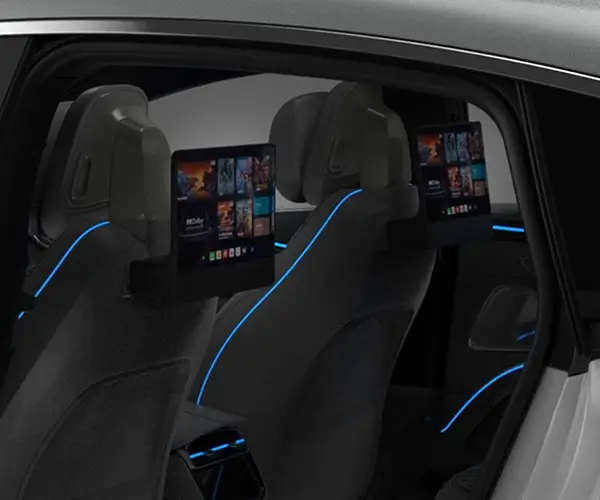Getting Started with Servo Motors: The Key to Precision Movement
Servo motors have revolutionized the world of robotics, automation, and DIY electronics. Known for their precision, reliability, and ease of use, they’re the perfect choice whether you’re building a robotic arm, a remote-controlled vehicle, or an automated home system. But before you can harness the power of a servo, you need to understand how to connect it properly.

What Is a Servo Motor? A servo motor isn’t just any motor—it’s a rotary actuator that allows for precise control of angular position, velocity, and acceleration. Unlike regular motors that spin freely, servo motors are equipped with a built-in feedback system that makes them perfect for tasks requiring accuracy.
Types of Servo Motors When learning how to connect a servo motor, it’s important to recognize the types available:
Standard Servos: Typically used for basic applications, operating on a simple PWM signal. Digital Servos: Offer finer control and faster response times due to digital circuitry. Continuous Rotation Servos: Designed to rotate endlessly, functioning more like a regular motor but with the ability to control speed and direction.
Components Needed for Connection Before diving into wiring, gather the necessary components:
A servo motor (select based on your project’s needs) Power supply (often 5V, but check your servo’s specifications) Microcontroller or control board (like Arduino, Raspberry Pi, or similar) Connecting wires (commonly male-to-male jumper cables) Optional: a breadboard for prototyping Software environment (Arduino IDE or relevant programming platform)
Understanding the Pinouts Most servo motors have three primary wires:
Power (Vcc): Usually red, connecting to +5V or your specified power supply. Ground (GND): Usually black or brown, connecting to the system ground. Signal (PWM): Usually yellow, white, or orange, carrying the pulse signal that dictates position.
Safety First Ensure your power supply matches the voltage and current requirements of your servo. Overloading can damage the motor or your control board. Always double-check the specifications before connecting.
Step-by-Step Connectivity Guide (Overview) The process involves a few critical steps:
Connect the power supply to the servo. Connect the ground from the power source to the servo’s ground wire. Connect the control (signal) wire from your microcontroller’s PWM pin to the servo’s control wire. Test the connection with basic commands before integrating into larger projects.
Wiring the Servo: Making the Connection Work Seamlessly
Now that you've got a general understanding of what a servo motor is and its components, let’s dig into the details of wiring and configuring your servo for optimal performance. Proper wiring is the backbone of any successful project, and missing tiny details can lead to frustration or hardware failure.
Step-by-Step Wiring Procedure
1. Choose Your Power Source Most small servos operate at 4.8V to 6V. You can use a dedicated power supply or the 5V line from a microcontroller development board. However, if your servo has a high current draw, an external power supply is advisable to prevent voltage dips that can cause erratic movement.
2. Connect Power and Ground Connect the red wire (Vcc) to the positive terminal of your power supply. Connect the black or brown wire (GND) to the ground terminal of your power source and your microcontroller GND. Ensuring a common ground is crucial for accurate signal reading.
3. Connect the Signal Wire Plug the signal wire into a PWM-capable digital output pin. For Arduino Uno, digital pins 3, 5, 6, 9, 10, and 11 support PWM signals. Your choice depends on your code and project design.
4. Confirm the Wiring Double-check all connections. Correct wiring prevents damage, and verifying before powering on can save debugging headaches later.
Testing the Connection with a Simple Code For Arduino users, a simple sketch like the following can test your servo connection:
#include Servo myServo; void setup() { myServo.attach(9); // Attach servo to PWM pin 9 } void loop() { myServo.write(0); // Move to 0 degrees delay(1000); myServo.write(90); // Move to 90 degrees delay(1000); myServo.write(180); // Move to 180 degrees delay(1000); }
Upload this code, and if the servo responds correctly, your wiring is solid. If it doesn’t move or jitters, revisit your connections and power supply.
Power Supply Tips Powering multiple servos simultaneously can be tricky. Draws can surge, causing voltage drops. Use a separate power source, ideally a regulated 5V supply capable of delivering enough current (every servo can draw 1A at peak), and connect grounds together.
Common Troubleshooting Tips
Servo jitters or doesn’t move: Check power and ground connections. Make sure your power supply can handle the current draw. Servo moves erratically: Confirm signal wiring, and ensure the PWM signal isn’t noisy or degraded. No movement: Verify code, wiring, and that your microcontroller pins support PWM.
Advanced Connection Considerations As your projects grow complex, consider decoupling power supplies for servos from microcontrollers, using filtering capacitors (like a 0.1μF ceramic capacitor across power and ground), and employing dedicated motor drivers or ESCs (Electronic Speed Controllers) for larger or more powerful servos.
Integrating with Control Systems Once wired and tested, you can integrate your servo control into larger systems—adding sensors, feedback loops, or remote control interfaces. For example, combining with an Arduino and a potentiometer allows manual control, while integrating with a sensor array enables autonomous adjustments.
If you’re eager to dive into specific projects, troubleshoot wiring issues, or explore advanced configurations like serial communication with multiple servos, I’m happy to provide further guidance. Connecting a servo motor isn’t just about the wires—it’s about understanding how to orchestrate movement that brings your creative vision to life.
Kpower has delivered professional drive system solutions to over 500 enterprise clients globally with products covering various fields such as Smart Home Systems, Automatic Electronics, Robotics, Precision Agriculture, Drones, and Industrial Automation.




































